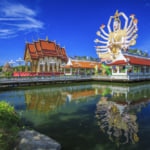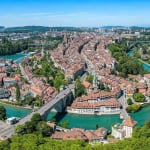Name: Maruoka Castle
Address: 1-59 Kasumicho, Maruoka-cho, Sakai City, Fukui Prefecture
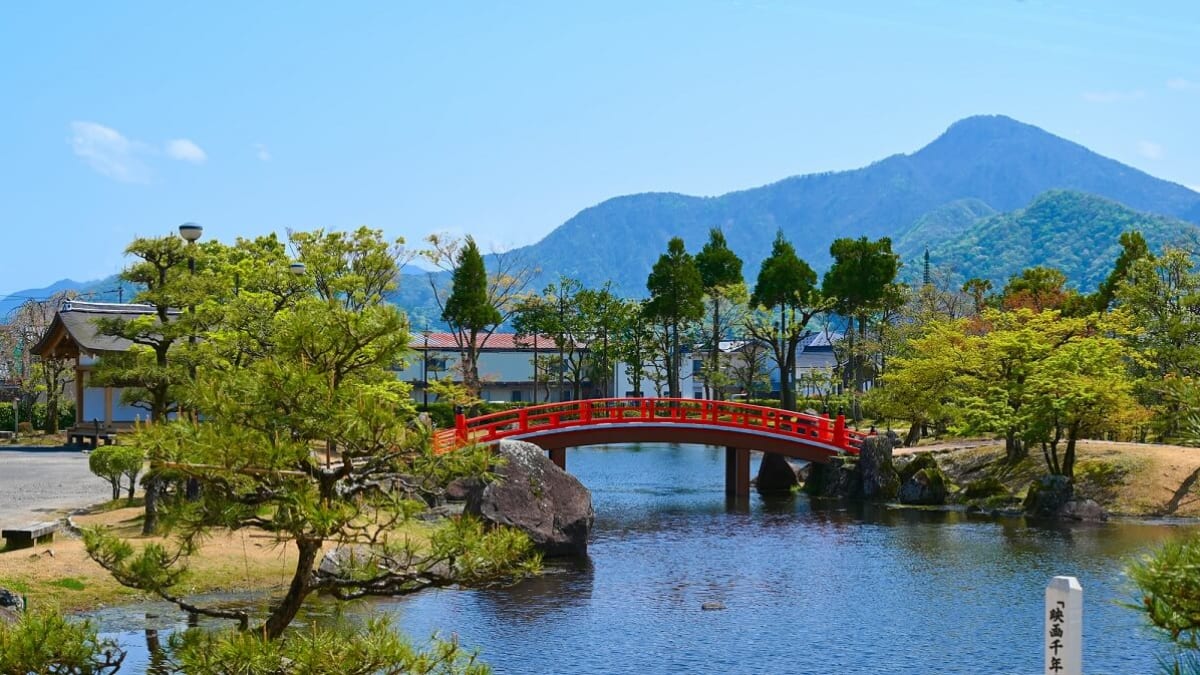
Historical Spots in Fukui Prefecture (Echizen)! 7 Recommended Locations
Fukui Prefecture, formerly known as Echizen Province, is home to many historical spots. In this article, we introduce must-visit historical locations for exploring Fukui's rich history! Situated in a location with easy access from Kyoto and the continent, Fukui Prefecture (Echizen) has long been considered a key transportation hub. Let's check out some of its historical sites.
table of contents
[x] close
Historical Spots in Fukui Prefecture (Echizen)! 7 Recommended Locations
- 1. A Simple Yet Profound Castle: Maruoka Castle
- 2. The Rise and Fall of the Asakura Clan in Fukui: Ichijodani Asakura Clan Ruins
- 3. Experience Temple Lodging at a Historic Fukui Temple: Daihonzan Eiheiji
- 4. The Majestic Wooden Torii of Fukui’s Kehi Shrine, One of Japan’s Three Great Wooden Torii
- 5. The Fortress-like Kanegasaki Shrine (Kanegasaki Castle Ruins) in Fukui
- 6. Murasaki Shikibu Park, a Spotlight Attraction from the NHK Drama Hikaru Kimi e
- 7. The Tranquil Stone Steps of Heisenji Hakusan Shrine
- ◎ Summary of Recommended Historical Spots in Fukui Prefecture
1. A Simple Yet Profound Castle: Maruoka Castle

Maruoka Castle, located in Fukui, sits north of the prefecture’s center and is also known as Kasumiga Castle. It is the only remaining castle keep in the Hokuriku region. The name "Kasumiga Castle" originates from a legend where a giant serpent created a mist to hide the castle during a battle. Maruoka Castle is said to be the oldest surviving castle in Japan and has been selected as one of Japan’s Top 100 Castles.
Being the oldest surviving castle, its keep does not resemble the grand castles people often imagine. Instead, it stands as a historical site with a simple yet dignified appearance.
Built during the Azuchi-Momoyama period, it was once ruled by a retainer of Oda Nobunaga. Throughout history, its ownership changed due to events such as the Honno-ji Incident, the Kiyosu Conference, and the Battle of Sekigahara. During the Edo period, it served as the administrative headquarters of the Maruoka Domain, but in the Meiji era, it was dismantled except for the castle keep. Maruoka Castle has silently watched over the history of Fukui. While its inner moat has been filled in, there are plans for its restoration, making it an anticipated new historical attraction.
2. The Rise and Fall of the Asakura Clan in Fukui: Ichijodani Asakura Clan Ruins

The Ichijodani Asakura Clan Ruins are located in the southeastern mountainous region of Fukui City. Once home to Ichijodani Castle during the Sengoku period, the castle keep no longer remains, and it now exists as a historical ruin. This site is listed among Japan’s Top 100 Castles and has been designated as a Special Historic Site by the Japanese government.
The Asakura clan entered Echizen (modern-day Fukui) from Tajima (now part of Hyogo Prefecture) during the Sengoku period and ruled the area. The Asakura family governed this land for five generations, spanning 103 years. Following the Ōnin War, many people fled from Kyoto to this region, leading to significant development.
In 1573, the Asakura clan's rule came to an end after being defeated in the Battle of Tonezaka. The Oda Nobunaga forces set fire to Ichijodani, marking the end of its history. Later, historical events such as the Ikko Ikki uprisings led to the Asakura clan’s retreat to Echigo.
Excavations began in 1967, and the site has since been preserved as a historical landmark. The Ichijodani Asakura Clan Ruins Museum showcases the history of the Asakura family and exhibits various excavated artifacts.
Name: Ichijodani Asakura Clan Ruins
Address: Jōdonouchi-cho, Fukui City, Fukui Prefecture
3. Experience Temple Lodging at a Historic Fukui Temple: Daihonzan Eiheiji
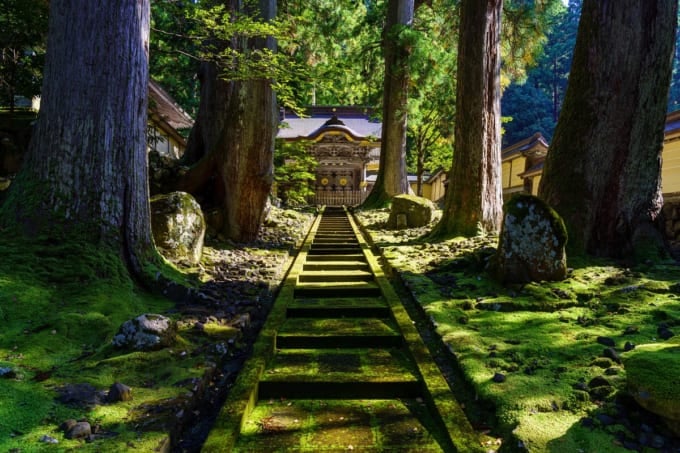
Located in the northern part of Fukui Prefecture, Daihonzan Eiheiji is one of the two main temples of the Soto Zen school, along with Sōjiji in Yokohama. In 1244, Zen master Dōgen established Daibutsu-ji Temple at Kasamatsu Peak in Fukui Prefecture. Two years later, he renamed it Kisshōzan Eiheiji, the name it holds to this day.
With a history spanning 80 generations of head priests, Eiheiji continues to thrive as a temple dedicated to Zen practice. Nearly 70 temple buildings are spread across the mountainous terrain of Daibutsu-ji, forming a place of monastic training. Around 200 monks currently reside there, engaging in rigorous spiritual training.
A notable historical spot within the temple grounds is a bronze statue depicting a scene from Zen practice. It portrays a senior monk drying shiitake mushrooms, while Zen master Dōgen asks, "What is training? What is life?" This moment is considered the foundation of Zen practice.
Name: Daihonzan Eiheiji
Address: 10-5 Shihi, Eiheiji-cho, Yoshida-gun, Fukui Prefecture
4. The Majestic Wooden Torii of Fukui’s Kehi Shrine, One of Japan’s Three Great Wooden Torii
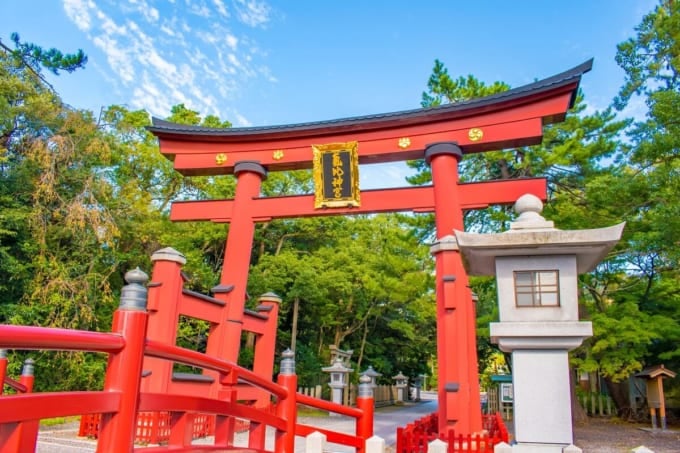
Located in Tsuruga City, Fukui Prefecture, Kehi Shrine (Kehi Jingu) is the chief guardian shrine of the Hokuriku region and the first-ranked shrine of Echizen Province. Established in 702, this historical site enshrines seven deities and serves as the region’s general protector.
The shrine’s large vermilion torii gate is one of Japan’s Three Great Wooden Torii and has been designated an Important Cultural Property of Japan. Comparable to those of Kasuga Taisha and Itsukushima Shrine, it holds significant historical and cultural value.
Fukui, with its Tsuruga Port serving as a gateway to Korea and China, received special recognition from the imperial court as the main guardian shrine of Hokuriku. It is a shrine deeply rooted in history, mentioned in ancient texts such as Kojiki, Nihon Shoki, Nihon Koki, Shoku Nihon Koki, and Nihon Montoku Tenno Jitsuroku. Since the Meiji era, it has been officially managed as a government-supported shrine.
Within the shrine grounds, there is a statue and a haiku monument of Matsuo Basho, who visited Kehi Shrine during his journey documented in The Narrow Road to the Deep North. Several other haiku monuments related to Matsuo Basho are scattered around the shrine, making it an interesting historical site to explore.
Many visitors from nearby Fukui areas come here for Shinto rituals such as Miyamairi (newborn blessings), Shichi-Go-San (children’s milestones), Yakubarai (warding off misfortune), and traffic safety prayers. The shrine is also known for its Enmusubi Sakura (cherry blossoms for matchmaking), attracting those seeking blessings for relationships.
Name: Kehi Shrine
Address: 11-68 Akebono-cho, Tsuruga City, Fukui Prefecture
Official Website: https://kehijingu.jp/
5. The Fortress-like Kanegasaki Shrine (Kanegasaki Castle Ruins) in Fukui
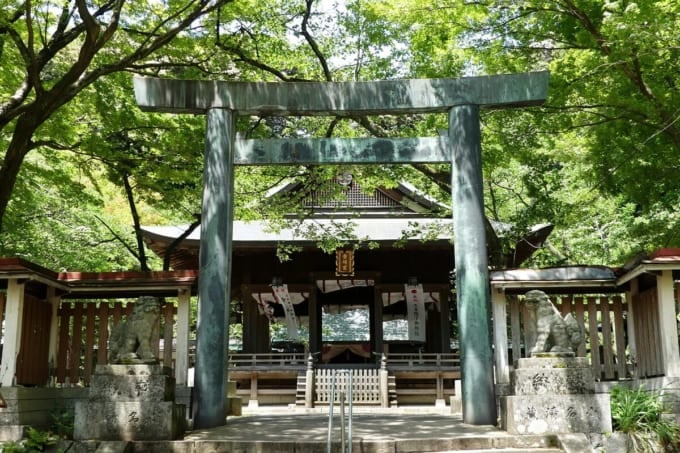
Kanegasaki Shrine, located near Tsuruga Bay in Fukui Prefecture, is one of the Fifteen Shrines of the Kenmu Restoration, dedicated to Southern Court royalty and warriors. It primarily enshrines Prince Takanaga and Prince Tsunenaga and is classified as a government-supported middle-ranked shrine. Built on the site of Kanegasaki Castle, this historical landmark is strategically positioned on high ground, with three sides facing the sea—allowing it to function as a fortress with clear visibility of approaching enemies.
During the Kenmu Restoration, Emperor Go-Daigo ordered Prince Takanaga, Prince Tsunenaga, and Nitta Yoshisada to enter Hokuriku and reclaim the region under the imperial army. However, Ashikaga Takauji countered by attacking and destroying Kanegasaki Castle, leading to the deaths of Prince Takanaga, Prince Tsunenaga, and over 300 of Nitta’s soldiers. This tragic history is why the shrine remains dedicated to their spirits today.
Visitors to Kanegasaki Castle Ruins may recognize the location from the NHK Taiga drama Kōmyō ga Tsuji. The shrine is believed to bring blessings for love, matchmaking, overcoming difficulties, good fortune, and financial success. The shrine’s mascot, "Fukumusume Karen", is used for promotional activities.
Name: Kanegasaki Shrine (Kanegasaki Castle Ruins)
Address: 1 Kanegasaki-cho, Tsuruga City, Fukui Prefecture
Official Website: http://kanegasakigu.jp/
6. Murasaki Shikibu Park, a Spotlight Attraction from the NHK Drama Hikaru Kimi e
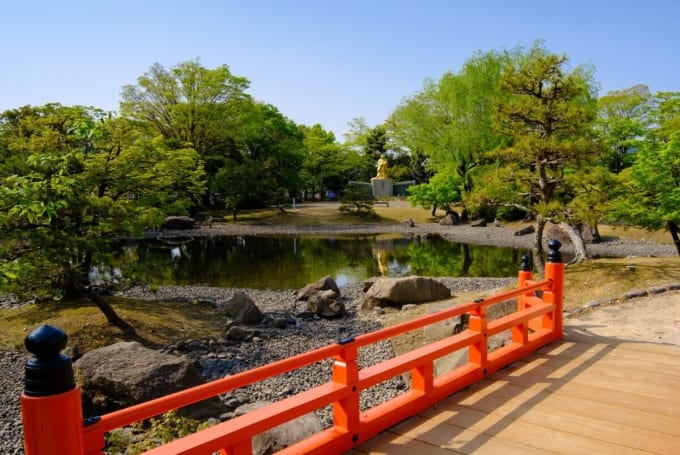
Located in Echizen City, Fukui Prefecture, Murasaki Shikibu Park is a serene garden designed in the Shinden-zukuri style, evoking an elegant Heian-era atmosphere. It is situated in a region that once flourished as the center of Echizen (modern-day Fukui). Recently, this historical site has gained renewed attention due to its connection with the NHK Taiga drama Hikaru Kimi e, which focuses on Murasaki Shikibu’s life.
In 996, Murasaki Shikibu’s father was appointed as the provincial governor of Echizen, and she accompanied him to the region, where she lived for about one year. The park features a golden statue of Murasaki Shikibu and a beautifully crafted cypress fishing pavilion, both of which are open for visitors to explore. Additionally, the adjacent museum, "Murasaki Yukari no Yakata", offers insights into her life and the cultural significance of the area.
Name: Murasaki Shikibu Park
Address: 20 Higashi Senpuku, Echizen City, Fukui Prefecture
Official Website: https://www.tokimekuru-echizen.jp/spot-07
7. The Tranquil Stone Steps of Heisenji Hakusan Shrine
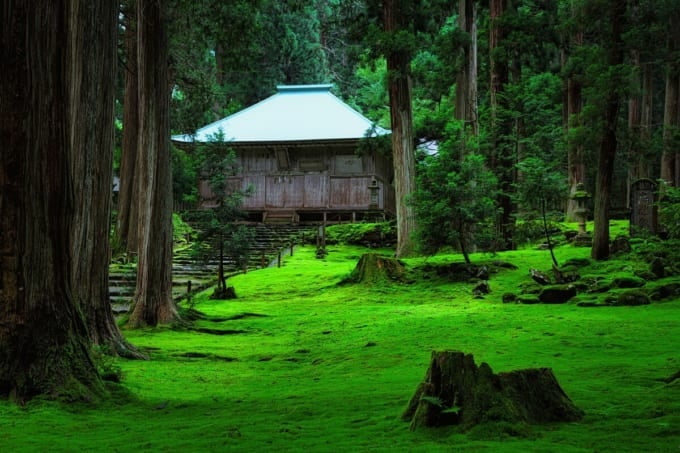
Founded in 717 by the monk Taichō, Heisenji Hakusan Shrine is a historic temple in Fukui Prefecture. Dedicated to Izanami-no-Mikoto, it once served as an important training site for Zen practitioners. The shrine is also tied to legendary figures such as Minamoto no Yoshitsune and Benkei, who are said to have disguised themselves as monks in the Kamakura period. During the Sengoku period, the temple was home to 8,000 warrior monks, and its surrounding town flourished under religious governance.
However, in 1574, the temple complex was burned down during the Ikko Ikki uprising, and its historical significance was temporarily lost. In the modern Heisei era, archaeological excavations began, leading to the restoration of parts of the ancient site. While the site spans 200 hectares, only 2 hectares have been excavated so far, leaving much yet to be uncovered.
One of the shrine’s most striking features is its long stone staircase, leading visitors into its peaceful and mystical grounds. The steps were meticulously arranged by monks during the Muromachi period, creating a grand and atmospheric approach to the shrine.
Although Heisenji Hakusan Shrine is a historical treasure, its natural beauty makes it a must-visit scenic spot. During summer, the shrine’s grounds are covered in lush green moss, making it one of Japan’s Top 100 Historical Landscapes and a Special Place of Scenic Beauty. It has also been selected for Japan’s Top 100 Fragrant Landscapes, adding to its unique charm.
Name: Heisenji Hakusan Shrine
Address: Heisenji, Heisenji-cho, Katsuyama City, Fukui Prefecture
Official Website: https://heisenji.jp/
◎ Summary of Recommended Historical Spots in Fukui Prefecture
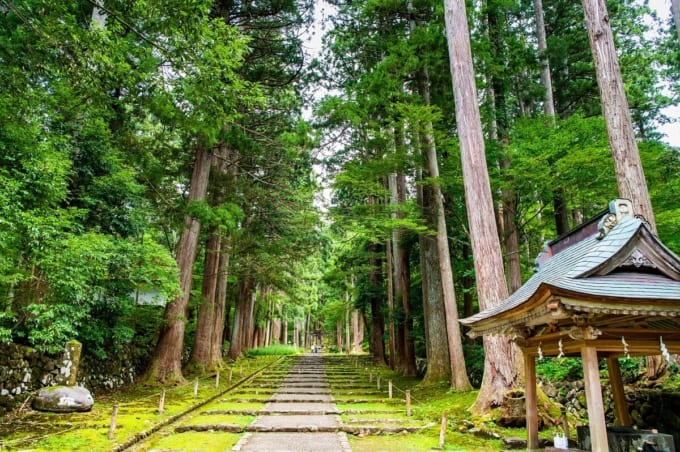
Fukui Prefecture is home to historical sites that have shaped the course of Japanese history. If past events had unfolded differently, history as we know it might have taken another path. While Fukui is known for its abundant nature and sightseeing attractions, it is also a place where history lovers can explore the remnants of Japan’s rich cultural heritage. By visiting Fukui’s historical spots, you can step into the same landscapes that historical figures once gazed upon. Imagining what they might have felt and experienced can make your journey even more fascinating.
RELATED ARTICLES
REGIONS
CATEGORIES
FEATURED ON Fukui
-

5 Recommended Must-See Spots When Touring Fukui in Winter
-
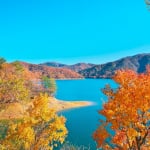
4 Recommended Tourist Spots in Kuzuryu – Enjoy Beautiful Natural Scenery and the Great Outdoors!
-
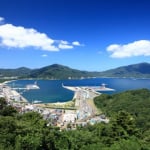
8 Must-See Tourist Spots in Tsuruga – Discover Breathtaking Beaches and Historic Landmarks
-
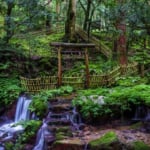
A town rich in nature and water! Introducing 8 sightseeing spots in Wakasa Town
-
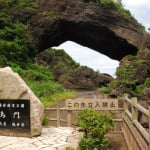
5 Recommended Spots in Echizen City – A Town That Developed as the Center of the Echizen Region
MOST POPULAR ON Fukui
-
 1
1Doha: Must-see Attractions in the Capital of Qatar
-
 2
2Toronto: 10 Things to do in this Picturesque Canadian City
-
 3
3Amarillo: A City Famous for It’s Amazing Canyons, Great History and Music
-
 4
4South Korea: Dazzling Scenery, Rich Culture and Fascinating History
-
 5
5Kuwait: A Country in Middle East Asia Famous for Hot Sand Dunes and Stunning Cityscape


